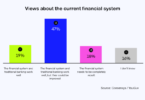The Enterprise Ethereum Alliance’s (EEA) has published a report outlining blockchain applications for the telecommunications industry. The report aims to encourage blockchain adoption by highlighting the potential for six use cases.
Industry players such as T-Mobile, SK Telecom, KDDI and Clear contributed to the paper, as well as Ethereum development company ConsenSys.
Ron Resnick, EEA executive director, says the report is “one of the more comprehensive sets of blockchain use cases for the telecom industry that you will come across.”
Roaming
The first use case is for mobile roaming. Authenticating roaming phones is currently slow, vulnerable and costly. By implementing a permissioned blockchain, where each operator has access to the others’ public keys, roaming authentication can be simplified.
Moreover, there’s potential to use blockchain for a roaming reconciliation system, ensuring roaming charges are consistent between operators.
Other case studies seen by Ledger Insights: There are numerous blockchain roaming initiatives focused on reconciliation and settlements, including Korea Telecom, IBM/Syniverse and Orange, Tomia, Telefonica and startup Clear with Colt, PCCW and others.
Enhancing trust in IoT devices
Secondly, the report states that blockchain can be used to help IoT devices recognize whether to trust other devices or not, i.e. to make justified trust decisions. By making certain information available via a blockchain, devices won’t need to arrive at trust decisions based on one source of information. Instead, it will allow them to draw information from a wide range of sources.
Other case studies seen by Ledger Insights: Recently, Korea Telecom launched a variation on the idea. It’s using blockchain to provided permissioned access to IoT devices so that their IP addresses are not publicly available.
Data Privacy and Monetization
The third use case deals with consumer data privacy and how blockchain can ensure privacy rights are respected (including GDPR’s “right to be forgotten”). In essence, personal data which needs to be capable of deletion would be stored off-chain. Hence, only a hash value evidencing its existence would be on-chain. That way, the right to be forgotten can be respected. For other data, Zero-Knowledge Proofs may be used only to reveal necessary data.
Apart from pure privacy, a telecoms company could analyze and glean insights about the user, and offer it to the user who could have the opportunity to sell the data onto a third party. If the user wants to, they receive the data and store it on their phone or in the cloud. In this case, the data would not be stored on the blockchain, but the notifications might be recorded on Ethereum, including the user actions, such as whether they accept or reject it.
Other case studies seen by Ledger Insights: Telefonica is exploring a blockchain-based consumer data marketplace.
Digital content distribution
Next, the report delves into ways to offer more to the consumer, who is demanding ever lower prices for telecommunications services, contributing to a high “churn rate”. By adopting a token or digital currency, telcos can provide their customers with non-monetary rewards. These may offer an incentive to stay with the existing provider.
Tokens could be traded in for video, music, or even items that aren’t immediately thought of as digital such as concert tickets. The paper envisages creating a digital content marketplace.
Incentivizing quality of service
The fifth use case highlights that telcos are incentivized to offer cheap services rather than high quality. As a result, there are significant quality issues with the services provided in B2B relationships. By linking participants via smart contracts on a blockchain platform, the report argues that doing so will help align goals of telcos, their B2B partners and customers. The result would be higher quality and lower prices.
For example, a fee is agreed between parties, and on installation, only part of the activation fee is paid to the telco in real-time. The balance will be based on agreed criteria such as time taken to repair or customer complaints. After a specified time the balance can be released. It also considers the role of an auditor which will be compensated using tokens.
Identity
Finally, the report outlines how to apply blockchain to provide proof of identity of a customer via their smartphone. The system would use Decentralized Identifiers as the consumer’s digital identity. This would remove the need for the consumer to have multiple usernames and passwords.
Other case studies seen by Ledger Insights: Identity is an area being explored by multiple telecoms companies. All the major South Korean telecoms carriers are collaborating on a blockchain-based identity service in conjunction with Samsung and two major banks. Additionally, Turkcell is exploring identity as is SoftBank/TBCASoft on behalf of the Carrier Blockchain Study Group (CBSG) which is a consortium of 14 major carriers. Turkcell is also a CBSG member.
There’s another new telecoms consortium that was announced just a couple of months ago. The Communications Blockchain Network (CBN) boasts Orange, Telefonica and China Telecom amongst its members. ConsenSys and several other technology companies are also participants. The CBN aims to streamline inter-carrier charges from consumer roaming.






